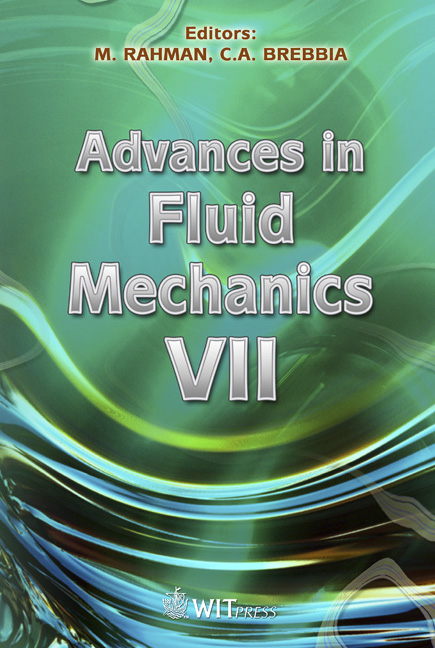Comparison Of Mixing Between Single- And Bubbly Two-phase Systems In A Rushton Stirred Tank
Price
Free (open access)
Transaction
Volume
59
Pages
8
Page Range
267 - 274
Published
2008
Size
299 kb
Paper DOI
10.2495/AFM080261
Copyright
WIT Press
Author(s)
J. S. Moghaddas, J. Revstedt, C. Trägårdh & L. Fuchs
Abstract
Comparison of mixing between single- and bubbly two-phase systems in a Rushton stirred tank J. S. Moghaddas1, J. Revstedt2,3, C. Trägårdh2,4 & L. Fuchs2,3 1Sahand University of Technology, P.O. Box 51335/1996, Tabriz, Iran 2Lund Institute of Technology at Lund University, Sweden 3Division of Fluid Mechanics, P.O. Box 118, SE-221 00 Lund, Sweden 4Division of Food Engineering, P.O. Box 124, SE-221 00 Lund, Sweden Abstract Mixing is a widely practiced operation to effect distribution, intermingling and homogeneity of matter. Stirred tanks with different geometries (such as in main container tanks, impellers, baffles, etc.) are also widely used to mix different materials. The forces applied by impellers develop overall circulation or bulk flow. Superimposed on this flow pattern, there are turbulent eddies and also molecular diffusion of the fluids, which have a direct effect on the mixing phenomenon into the stirred tank reactors. In this work the mixing field in an aerated stirred reactor with two Rushton turbines was experimentally analysed using the particle image velocimetry technique (PIV). The mixing characteristics were measured at three different impeller rotational speeds: 225, 300 and 400 rpm, for both single- and bubbly two-phase mixing systems. The bubbles will, due to reflection and refraction of the laser light, cause an uneven and unknown distribution of light intensity in the measurement plane. This can be compensated for by introducing a second tracer with a known concentration. Based on this method the mixing of a determining tracer in liquid-phase in a double Rushton turbine stirred tank is studied. Using the PIV measurement technique and the flow structure of the liquid phase, the pumping capacity of those systems were calculated. The aerated-tounaerated relative power was also calculated from the experimental results and compared with the theoretical values. Reasonable agreement between experimental and theoretical results was obtained. Keywords: mixing, bubbly flow, two- phase flow, stirred reactor, Rushton, PIV.
Keywords
mixing, bubbly flow, two- phase flow, stirred reactor, Rushton, PIV.





